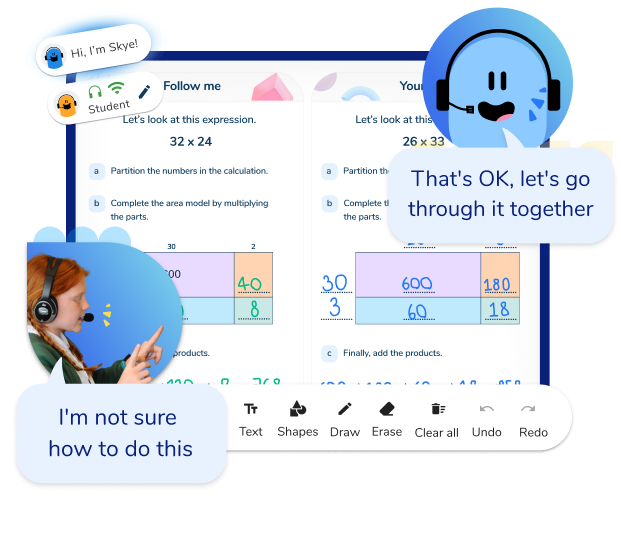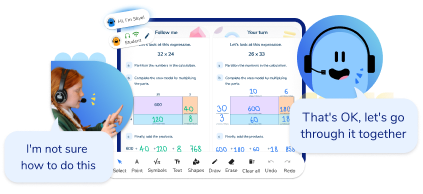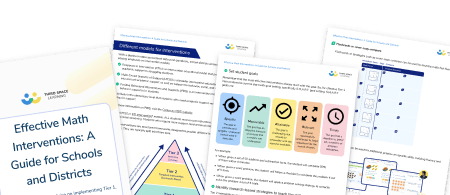Tier 2 Interventions: 5 Strategies To Accelerate Math Achievement
Tier 2 interventions are provided to students who have learning gaps or who struggle to master academic or behavioral skills in school. They can be an effective way to support all students if best practices are applied.
This article explores how to make the most out of Tier 2 interventions for the highest impact on student outcomes.
What is Tier 2 intervention?
Tier 2 intervention is instruction that focuses on specific skills that students need to progress. It may be that learners have a gap in their learning and never mastered skills like number sense or fractions, but they need to master those skills to make progress.
Alternatively, a student may struggle to demonstrate appropriate behavior or social skills and require additional support and strategies to help them progress.
While in Tier 2, students will have goals that they are focused on. They will work with the teacher or interventionist on a regular schedule, in addition to their core instruction. Their progress will be monitored weekly or every few lessons to ensure that students are making progress on the skill that they are working on.
Tier 2 intervention is different from differentiated instruction, which takes place in a learner’s main classroom. Tier 2 intervention is the second tier of intervention of multi-tiered systems of support.
Multi-tiered systems of support
Multi-tiered Systems of Support (MTSS) or Response to Intervention (RTI) are ways to support students with increasingly more intensive supports and focused lessons.
In MTSS or RTI, all students receive core instruction, core behavior support, and universal screening. Students who require more support receive Tiered interventions.
- Tier 1: All students receive school-wide grade-level instruction, academic support and behavior support.
- Tier 2: Students who are struggling to master content in Tier 1 intervention receive additional instruction, remediation, and reteaching. In Tier 2, teachers administer progress monitoring assessments to track student progress.
- Tier 3: Students who are not making expected progress in Tier 2 receive additional support in a one-to-one or small group Tier 3 intervention with more focused strategies.
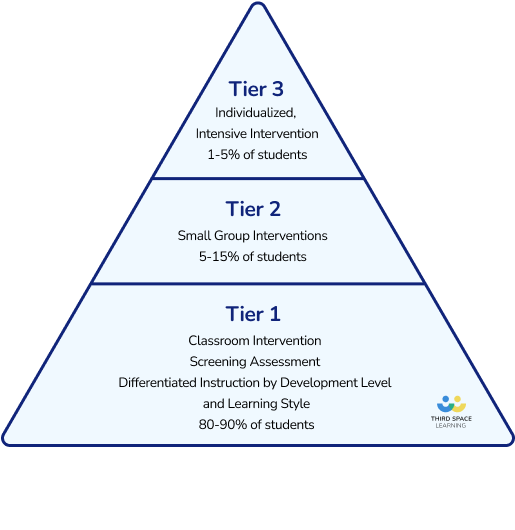
MTSS and RTI provide structure and support for students who are at risk for academic failure and who may have learning disabilities. Teachers use information from progress monitoring to engage in data-based decision-making about which learners should be referred for special education evaluations.
MTSS interventions and RTI are not only used for academic interventions but to support students displaying problem behavior.
Read more: What Is Response To Intervention?
Effective Math Interventions: A Guide for Schools and Districts
A guide for school leaders to implementing successful Tier 1, Tier 2, and Tier 3 math interventions, with detailed recommendations and examples for each tier
Download Free Now!What is the difference between Tier 1 and Tier 2 interventions?
The difference between Tier 1 and Tier 2 interventions is two fold: the focus and delivery.
Tier 1 focuses on remediating skills that students need to master to make immediate progress in the general curriculum and is delivered by the classroom teacher.
Tier 2, on the other hand, is focused on specific skills and may be administered by the classroom teacher or a tutor or interventionist.
How do you know when Tier 2 interventions are necessary?
Teachers will review data from all types of assessments, particularly summative assessments, curriculum-based measures and universal screeners. When teachers identify which students have learning gaps, they will provide an additional assessment to identify the specific skills students need to master.
Alternatively, teachers will use behavior assessments to identify students who may need positive behavior interventions and supports (PBIS).
These may include Tier 2 interventions such as Check-In/Check-Out (CICO) where students meet with a mentor in school to discuss their behavior periodically or join a social skills group to develop their social-emotional learning.
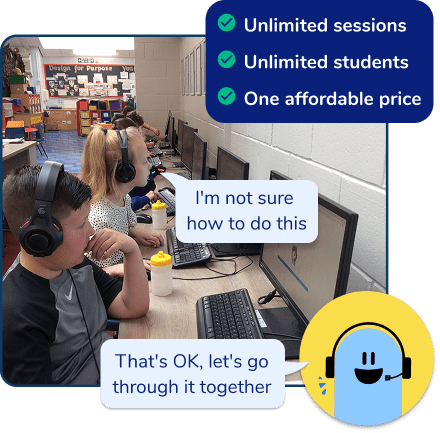
Meet Skye, the voice-based AI tutor making math success possible for every student.
Built by teachers and math experts, Skye uses the same pedagogy, curriculum and lesson structure as our traditional tutoring.
But, with more flexibility and a low cost, schools can scale online math tutoring to support every student who needs it.
Watch Skye in action5 examples of Tier 2 interventions for math
As math specialists, here, we’ve listed 5 examples of Tier 2 practices for math that include explicit instruction in math strategies and skills.
1. Graphic organizers
Graphic organizers can provide structure to help learners organize and manage problem solving.
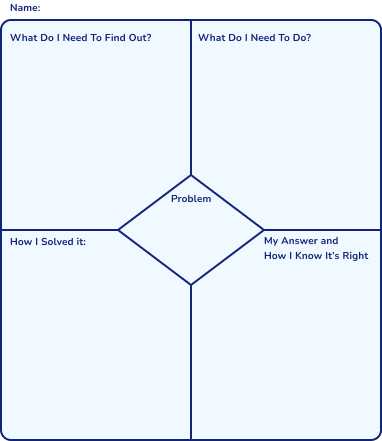
2. Flashcards or cover-copy-compare
Flashcards or strategies such as cover-copy-compare can be used to develop math fact fluency.
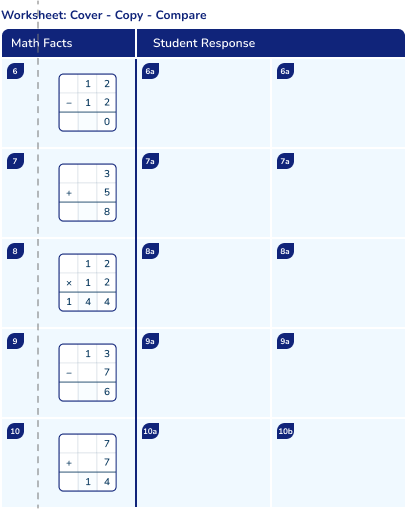
3. Online math program
Online math programs can be used for additional practice on specific skills, building fluency and confidence.
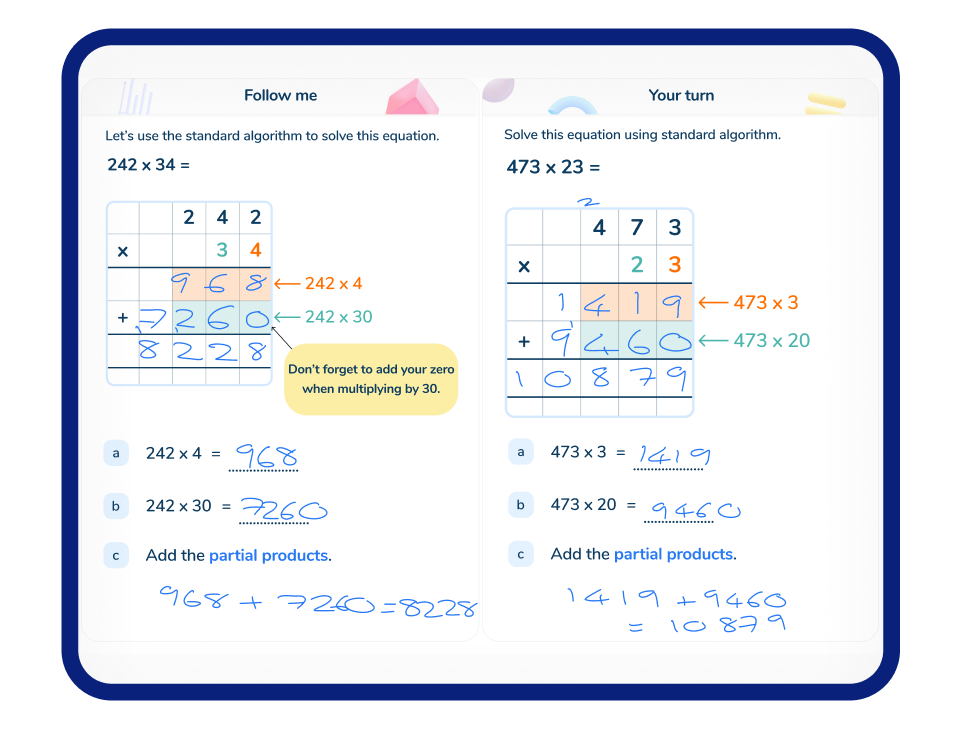
4. Peer tutoring or peer-assisted learning strategies (PALS)
When used effectively, peer tutoring can be a good opportunity for problem solving practice. For this to work, one partner must be secure in the math concept being learned by the second student.
5. Checklists
Checklists support self-monitoring or self-checking. Having a check-list in front of them helps the student to independently check over their work before going through it with a peer tutor, teacher or interventionist.
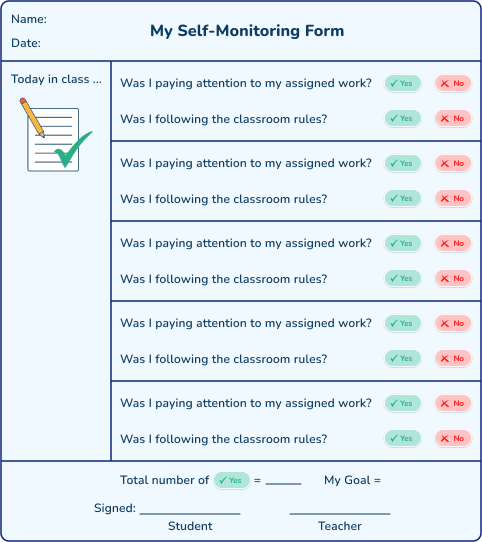
Read more:
Why are Tier 2 interventions important?
Tier 2 interventions are important because they provide students with remediation and reteaching of foundational skills and provide teachers with information about how a student understands and masters skills.
Ideally, in Tier 2 intervention, a student will make progress, eliminate learning gaps, and return to their general class. Or in the case of student behavior intervention, students will make progress, use strategies to regulate their behavior and eventually rejoin their peers.
But, if a learner is not making expected progress, information from Tier 2 is helpful when a student is referred for special education.
For example, if a teacher and school team suspect that a student has a learning disability, they will use progress monitoring data about what teaching strategies have been tried and how the student has responded to the increased instruction. If the student did not respond as expected, the next step is a referral for a special education evaluation.
What are the challenges for successful Tier 2 intervention implementation?
Tier 2 implementation can be a real challenge for schools. Addressing implementation challenges involves a school-wide commitment. Challenges include:
- Developing an initial intervention plan
- Setting effective Tier 2 goals
- Choosing the right evidence-based approach
- Finding the time and staff to administer interventions
- Engaging students
- Monitoring success by identifying which students are making progress
Below, we’ve included some tips for schools for successful Tier 2 implementation gained from over 10 years of experience working with schools.
How to develop an effective Tier 2 intervention plan
- Set student goals: The most effective interventions will always start with the goal. Use teacher assessments to identify specific learning gaps and set effective goals for your Tier 2 intervention
- Determine how you will monitor progress: How you will track the goal and how you will know the student has mastered it?
- Identify research-based strategies to teach the skill: Plan the resources and approach.
- Set the schedule: Typically, Tier 2 lessons will happen 4-5 times per week for 25-30 minutes per session.
- Provide training and professional development: Depending on the school, teachers, tutors, or interventionists may plan and deliver instruction. If non-specialists are delivering the intervention, ensure they have enough training and support.
- Set the timeline for review: After 6-8 weeks, plan to review the student’s progress and adjust the goals and strategies if necessary.
Read more: High-dosage tutoring
How to set effective Tier 2 intervention goals
Effective Tier 2 interventions always start with the goal. Tier 2 student goals should be SMART:
- Specific
- Measurable
- Achievable
- Relevant
- Timebound
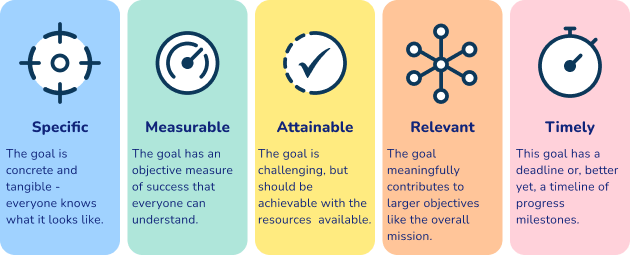
Here are some examples of effective SMART Tier 2 goals:
- When given a set of 50 addition and subtraction facts, the student will complete 80% of them within 4 minutes.
- When given a word problem, the student will follow a checklist to complete the problem 4 out of 5 trials.
- When given a word problem, the student will apply a math strategy for problem solving to correctly solve the problem 4 out of 5 trials.
5 strategies to boost Tier 2 intervention engagement
Student motivation will impact how effective an intervention can be. Tutors and teachers should incorporate motivation strategies to help students stay focused on goals and build motivation to learn.
1. Share goals
As teachers create goals for students, they can share them with students and involve students in monitoring their progress. This generates and maintains motivation as students see their hard work producing results.
2. Provide choice
Where possible, provide students with a choice of what they work on, how they work, or what they are working for. Providing choice gives students control that translates into investment in the work.
3. Praise
Provide specific feedback and praise. The ratio of positive praise to corrective feedback should be at least 4:1. Consider different ways to provide praise, including verbal feedback, or high-fives.
4. Provide extrinsic motivation
Often, when students are struggling or learning new skills, extrinsic motivation can help them to maintain motivation while they gain mastery. Use a token economy, points, or sticker reward system and connect the stickers or points with prizes that students want to earn. (If you do not want students to earn toys, consider having students earn experiences or the opportunity to win a tangible prize.)
5. Create connections
When students are working in tutoring or small group interventions, it can be difficult to see a clear connection to math class. Take time to connect what students are doing in intervention to their general class through reflection and explicit practice.
Best practice for Tier 2 interventions
Effective Tier 2 intervention implementation requires a school-wide commitment. Here are some practical ideas and best practice for Tier 2 interventions.
1. Match strategy with student need
Tier 2 strategies should be targeted to the individual students who receive them. Match strategies with students’ skill deficits by using the right tools at the right time. Make sure that the curriculum based measurements and universal screeners provide the data needed to identify which students need support and which skills teachers can start with.
2. Create collaboration within the school team
As students move through the tiers, they will have a school team of professionals who are in charge of planning and administering interventions. School leaders can provide and, importantly, protect time for teachers to collaborate around the challenges that they see in terms of math learning.
3. Maximize Tier 2 time
Tier 2 interventions can be incorporated into general education. This looks like math teachers planning for small group instruction, using data-driven instruction to create focused and flexible groups, and integrating review and reteaching into Tier 1 instruction.
4. Create focused and flexible grouping
As teachers use data to design groups, small groups of students should be focused on specific skills students need to learn. These groups should also be flexible and easy to adapt as students progress through the skills.
5. Maximize small group time
Create a schedule for intervention that maximizes instructional time. A visual timer can help keep students and the teacher focused.
6. Use a structure
Having a structured approach will also maximize small group time. An effective structure may be similar to the following:
- Review and practice mastered skills
- Teach and model the new concept
- Model teacher-led practice with the new concept
- Independent practice of the skill taught
7. Set a schedule for progress monitoring
Progress monitoring cannot be an afterthought in Tier 2. It must be at the forefront and is an important activity to complete frequently.
Set the schedule for progress monitoring ahead of time, whether it’s weekly or after a set number of lessons.
Have assessments ready and graph the data to show change over time. That data will be used to review with the school team to determine if the approach is working and drive decision-making.
How can Third Space Learning support Tier 2 interventions for math?
Third Space Learning tutors provide the focused instruction that students need to make progress. They can also maximize Tier 2 time in the classroom by providing individualized support to many students at once, reducing scheduling and staffing issues.
Looking for more information on school-based math intervention? Read more:
- 5 Myths About Elementary Math Interventions
- A Guide To Implementing Math Tutoring In Your School As Part Of Your Math Intervention Strategy
- Your School’s Tutoring Funding Options Explained
- Guide to summer tutoring programs
Tier 2 Interventions FAQs
Tier 2 interventions include math fluency practice, using a strategy like Cover-Copy-Compare to review math facts, teaching students a process to complete word problems, using graphic organizers to support math problem solving, or using manipulatives or visuals to show how math concepts work.
Tier 1 intervention is meant to address gaps in learning that can be addressed quickly and is administered in the general classroom. Small group tutoring in Tier 3 is more focused and targeted and may require support from a trained teacher or tutor.
Tier 3 math interventions refer to a more focused small group or one-on-one instruction with targeted goals. For example, a Tier 3 goal might be that a student will master counting by 5s, instead of the broader goal of skip counting in preparation for multiplication.
Math interventions address all math skills, from fluency to problem solving. Ideas for fact fluency include Cover-Copy-Compare and self-management. For problem solving, teachers can teach students to use a self-monitoring checklist, graphic organizers, or use peer tutoring or feedback.
Do you have students who need extra support in math?
Give your students more opportunities to consolidate learning and practice skills through personalized math tutoring with their own dedicated online math tutor.
Each student receives differentiated instruction designed to close their individual learning gaps, and scaffolded learning ensures every student learns at the right pace. Lessons are aligned with your state’s standards and assessments, plus you’ll receive regular reports every step of the way.
Personalized one-on-one math tutoring programs are available for:
– 2nd grade tutoring
– 3rd grade tutoring
– 4th grade tutoring
– 5th grade tutoring
– 6th grade tutoring
– 7th grade tutoring
– 8th grade tutoring
Why not learn more about how it works?
Meet Skye, our AI voice tutor. Built on over a decade of tutoring expertise, Skye uses the same proven pedagogy and curriculum as our traditional tutoring to close learning gaps and accelerate progress. Watch a clip of Skye’s AI math tutoring in action.
